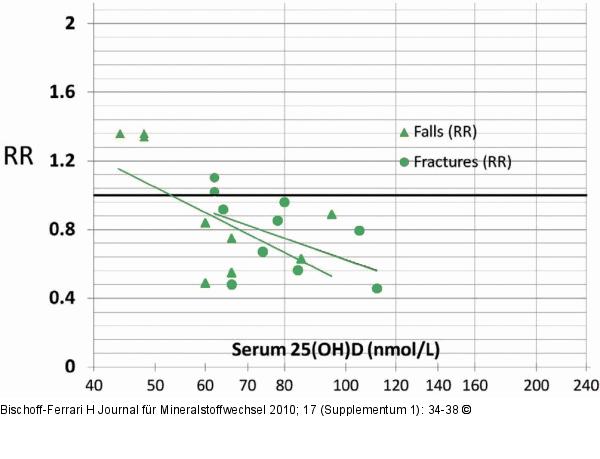Bischoff-Ferrari H Contribution of vitamin D to fracture prevention Journal für Mineralstoffwechsel & Muskuloskelettale Erkrankungen 2010; 17 (Supplementum 1): 34-38 Volltext (PDF) Summary Übersicht
| ||||
Abbildung 2: Fall-Fracture-Prevention Threshold for optimal fall and fracture prevention based on double-blind randomized controlled trials. Data points show the relative risk of falls and the relative risk of sustaining any nonvertebral fracture from double-blind RCTs, by achieved 25-hydroxyvitamin D levels in the treatment groups. Data was extracted from two 2009 meta-analyses [8, 9] and summarized in a recent benefit-risk analysis of vitamin D [29]. Based on these data, 75 or better 100 nmol/l (30 or better 40 ng/ml) are suggested as an optimal threshold of 25-hydroxyvitamin D for fall and fracture prevention |

Abbildung 2: Fall-Fracture-Prevention
Threshold for optimal fall and fracture prevention based on double-blind randomized controlled trials. Data points show the relative risk of falls and the relative risk of sustaining any nonvertebral fracture from double-blind RCTs, by achieved 25-hydroxyvitamin D levels in the treatment groups. Data was extracted from two 2009 meta-analyses [8, 9] and summarized in a recent benefit-risk analysis of vitamin D [29]. Based on these data, 75 or better 100 nmol/l (30 or better 40 ng/ml) are suggested as an optimal threshold of 25-hydroxyvitamin D for fall and fracture prevention |


